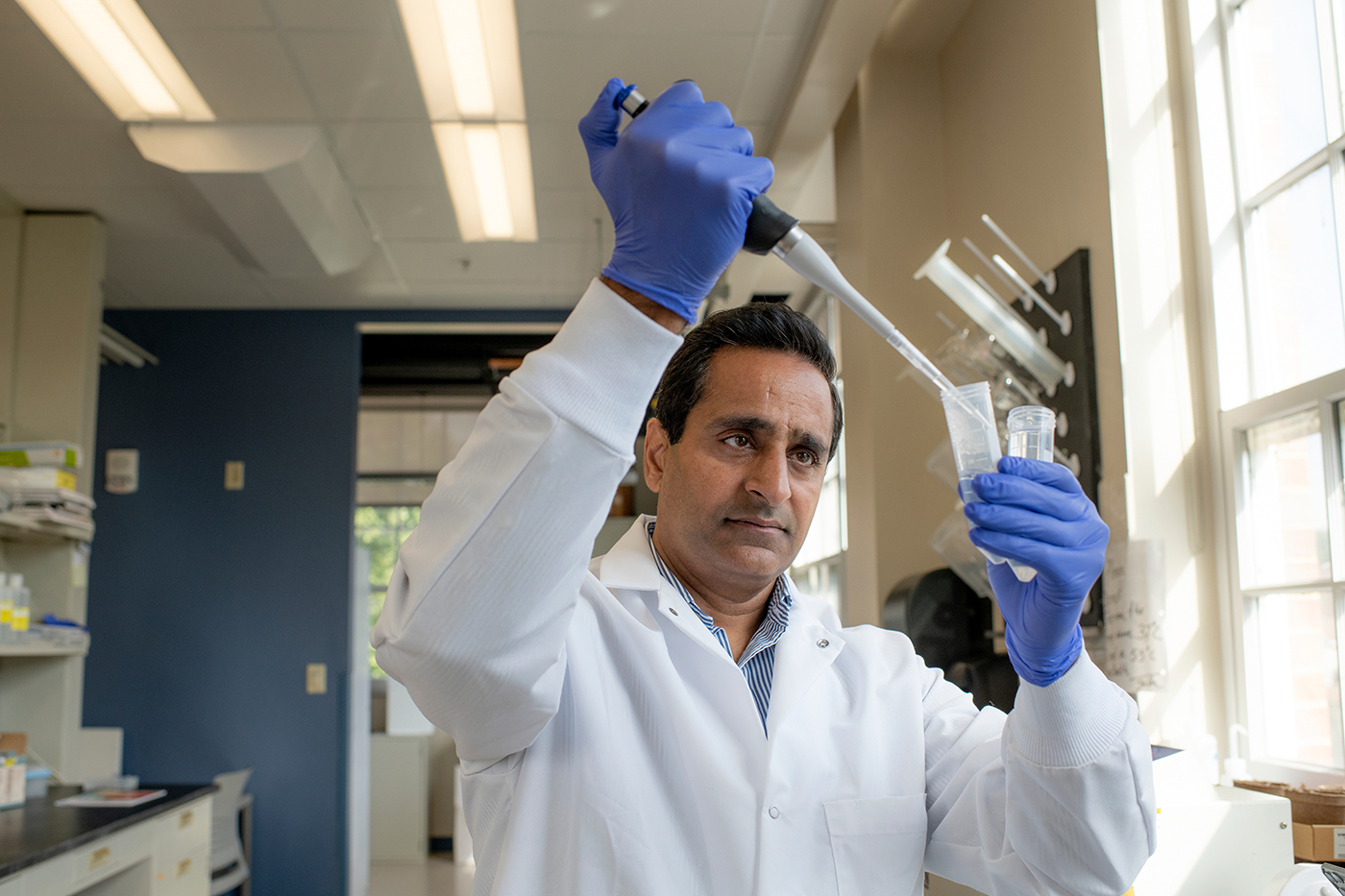
Biomedical researchers at Ohio University are leading an effort to uncover the clinical significance of a protein that is pivotal in fueling skeletal muscle, regulating exercise endurance, and enhancing insulin sensitivity. This groundbreaking research has been awarded a $2.6 million RO1 grant from the National Institutes of Health (NIH), enabling the team to investigate the previously unrecognized role of fat-specific protein 27 (FSP27) in skeletal muscle. The funding will support various research activities, including advanced training of students and fellows.
FSP27 was first identified by Vishwajeet Puri, Ph.D., a professor of Biomedical Sciences at Ohio University and the principal investigator of the project. Puri’s contributions to biomedical science have been continuously funded by the NIH since he started his independent research program in 2009. Remarkably, Puri has received six R01 grants from the NIH over the past nine years.
Puri initially identified FSP27 in human fat tissue, where it was found to regulate fat metabolism. Further investigations revealed that FSP27 is also present in skeletal muscle tissue.
“Because muscles burn fat for energy, we examined muscle tissue and discovered that FSP27 plays a significant role there as well,” noted Puri. “Given its presence in other body tissues, the term ‘fat-specific protein 27’ is technically a misnomer.”
This discovery has led to two interesting hypotheses the team is trying to prove with the grant.
“The first is that FSP27 fuels skeletal muscle through its action on the motor activity of cytoskeletal proteins,” explained Puri. “The second is that FSP27 regulates exercise endurance and insulin sensitivity by influencing glucagon-like peptide-1 (GLP-1)—the same hormone targeted by the drug Ozempic.”
Puri emphasized that this is an important function of FSP27 because Ozempic is extremely popular these days, not only as a treatment for type 2 diabetes but also as a weight-loss aid. Its active ingredient, semaglutide, has been shown to significantly reduce appetite and promote weight loss, making it a sought-after medication for people struggling with obesity and related conditions.
To investigate FSP27’s role in skeletal muscle insulin signaling and function, Puri and his team developed an innovative ‘humanized’ mouse model that expresses the human FSP27 transgene specifically in the skeletal muscle. These mice demonstrated exceptional physical performance, with dramatically upregulated GLP-1 receptors, and improved blood sugar regulation, muscle function and overall metabolic health.
“I would say these animal models that we generated act as pre-clinical models in our study,” said Puri. “We generated these mouse models to study [FSP27’s] physiological role, and not only that, we wanted to study its molecular mechanism as well—how is it doing what it’s doing, what pathways is it regulating.”

To test the experiment in humans, Puri collaborated with Leslie Consitt Ph.D., an expert on human physiology. Consitt collects human muscle samples and has found a strong correlation between FSP27 levels in muscle and its expression in human performance.
“After exercising and training, the amount of FSP27 went up, and performance improved,” said Consitt.
Ohio University’s Heritage College of Osteopathic Medicine has two institutes involved in this research. Investigators from various disciplines in the Diabetes Institute and the Ohio Musculoskeletal and Neurological Institute (OMNI) are contributing to the research.
“A strength of this proposal is the interdisciplinary collaboration formed between me (an expert in basic and translational research in lipid metabolism and signaling), Consitt (an expert in skeletal muscle metabolism), Cory Baumann, Ph.D. (an expert in skeletal muscle physiology), and Kevin Lee, Ph.D. (an expert in tissue insulin signaling),” explained Puri. “This collaboration utilizes our complementary expertise and builds upon our prior collaborative work in this project.”
Additionally, OHIO Research Assistant Professor Bijinu Balakrishnan, Ph.D., along with Ph.D. students Rabia Basri and Chloe Becker, are instrumental in the project, as well as many undergraduate students and postdoctoral researchers.
Puri expressed pride in the fact that all this research is being conducted exclusively within Ohio University and acknowledged the significant support he has received.
“I would like to give credit to the Osteopathic Heritage Foundation and the Heritage College of Osteopathic Medicine for providing me this opportunity and supporting our lab,” said Puri. “Not only just the regular administrative support, but they have also continuously funded me for the last nine years as an endowed professor. Without that, I would say it would not be possible at all.”
The NIH grant is funded for four years, with the ultimate goal of drug development. According to Puri, the results so far suggest this protein holds immense promise.
“When tested on 18-month-old humanized FSP27 mice, the age equivalent of a 60-year-old human, they performed as though they were half their age,” explained Puri.
He hopes to collaborate further with Consitt to explore whether FSP27 could benefit the aging human population.
“Can we use this protein as a target to improve muscle function. Muscle function declines with aging, so the question is, can we reverse or mitigate that decline by targeting FSP27.”




